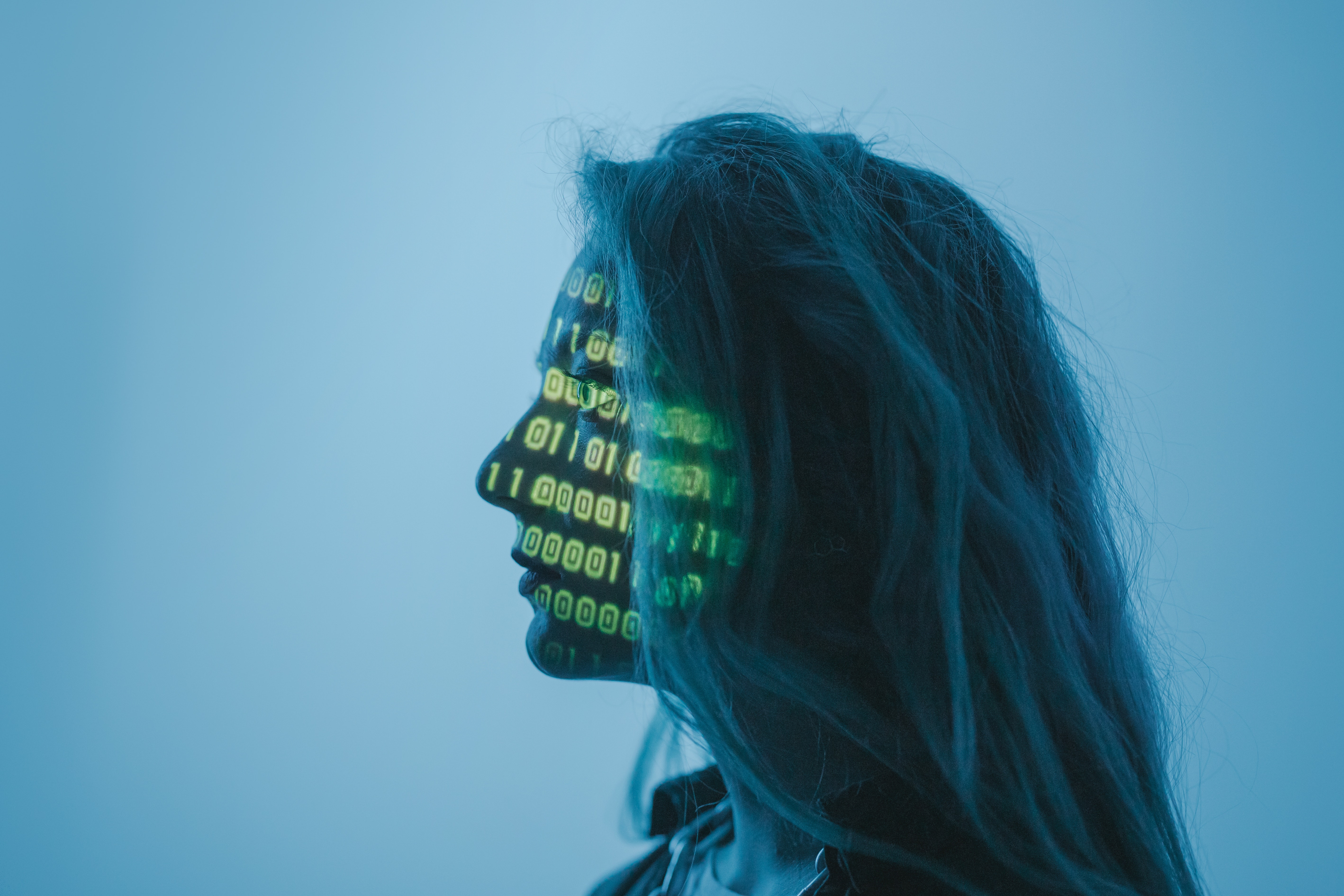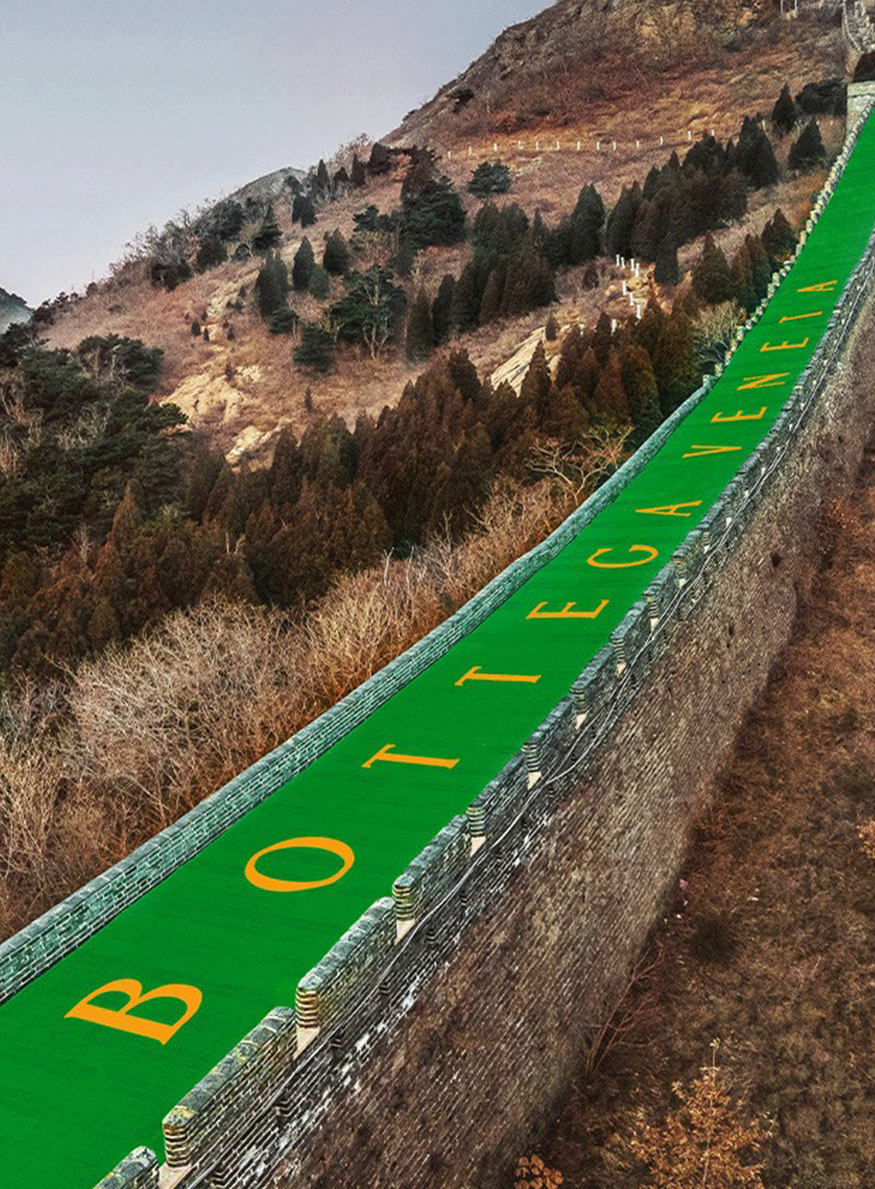Many different concepts, which are often misunderstood and misused, lie under the name of Artificial Intelligence.
Our aim with this dictionary, is to explain, in a simple yet accurate way, the many terms related to Artificial Intelligence.
Feel free to give us your feedback at info@heuritech.com. Let’s get started!
A*
Artificial Intelligence (AI)
A tricky one to start with because there is no homogeneous definition. We asked our R&D team, which led to a long and passionate debate. Here is what came out of it:
- Today, we can define AI as intelligent programs that achieve tasks usually tackled by humans.
- In the future, AI could be human intelligence autonomously reproduced by a program.
- One definition everyone agrees on: AI is a field of research which includes Machine Learning*, Deep Learning*, Natural Language Processing*, Visual Recognition*, among others.
Algorithm
An algorithm is a succession of simple instructions that achieves a predetermined goal. Let’s take a concrete example: getting dressed every morning (because who doesn’t find it hard?). You follow a strict process: first, underwear, then, clothes, and finally, shoes. That’s exactly what an algorithm does: follow instructions to answer a problem.
Attributes
The characteristics of an “object”: it could be anything ranging from colors, to textures, to shapes, etc. For example: what is Jeanne Damas wearing below? You can find all the attributes which make up her outfit next to the picture.
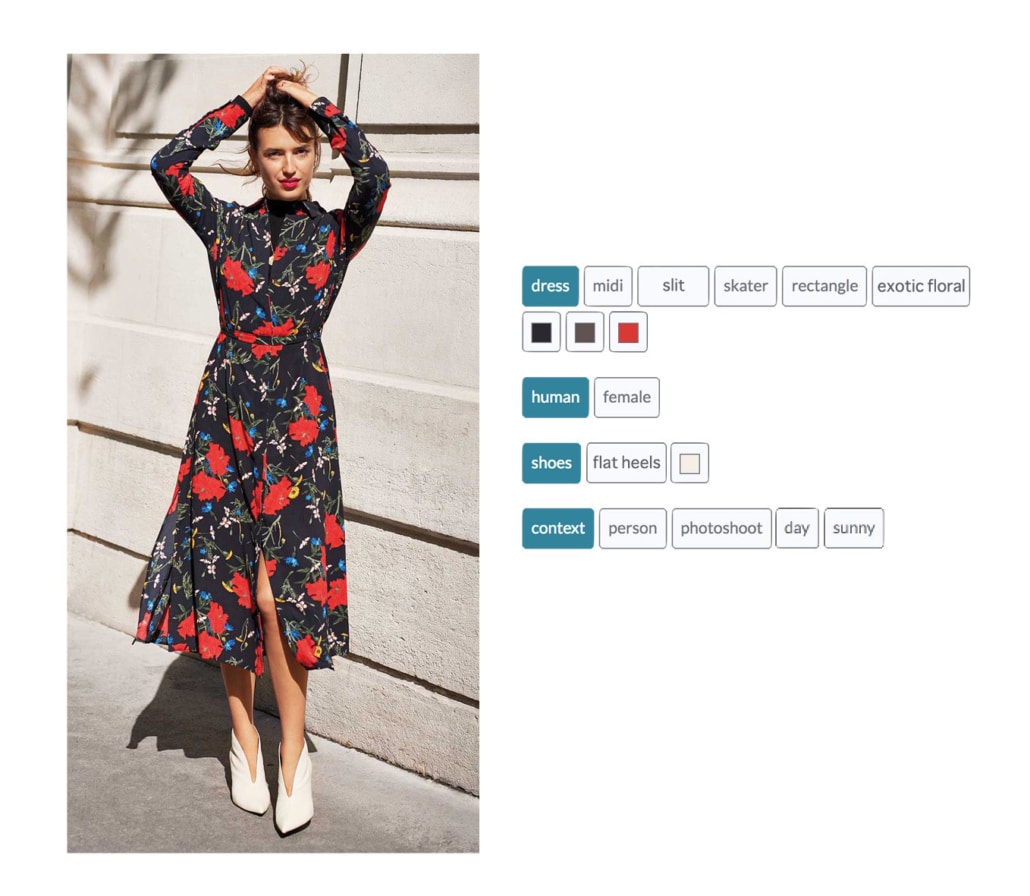
C*
Classification
Classification consists in organizing pieces of data into categories. In Heuritech’s case, these pieces of data correspond to images, and the categories might be different types of garments (i.e. bags, shoes, dresses, pants). To train a classification model, data scientists need labelled data*.
Clustering
A clustering model automatically groups images together that share common characteristics. Interestingly, the model groups images without being trained to group images.
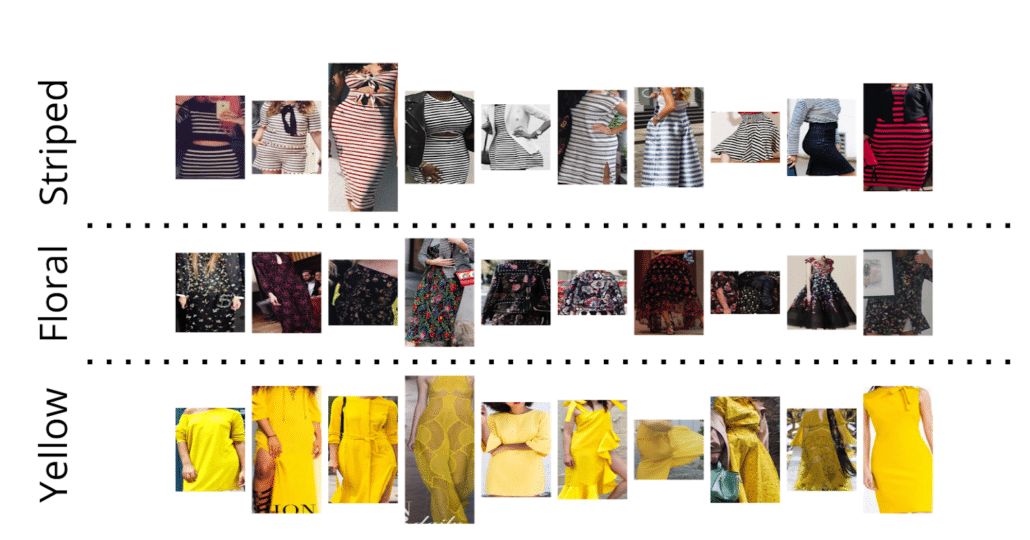
Computer Vision
Computer Vision is a branch of Artificial Intelligence focused on image and video, also called visual recognition*.
D*
Detection
A detection model localizes and classifies one or more objects in a picture. To visually represent the output of a detection model, rectangles are drawn (also called bounding boxes) around the detected object.
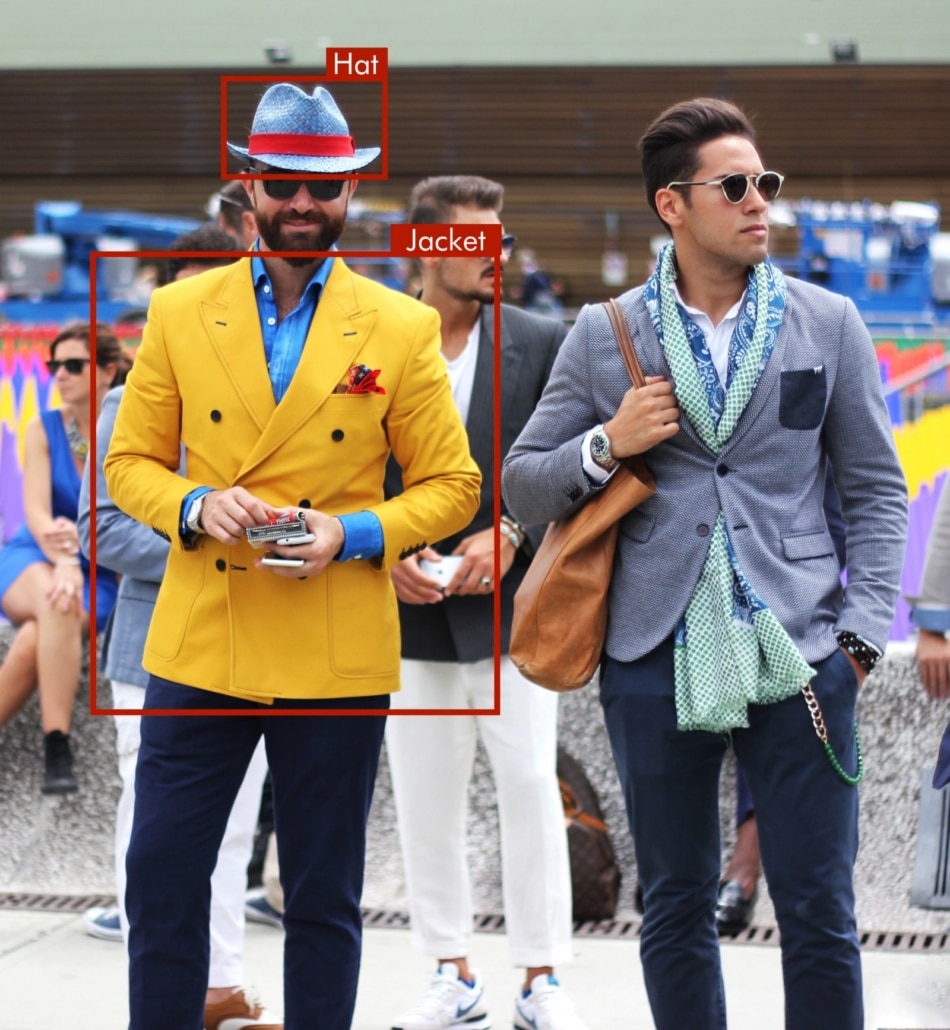
Data set
A list of curated data gathered to train a model or to evaluate its performance. In our case, the data set is composed of images, mostly related to fashion. For further explanation, see also labelled data*.
Deep Learning (a branch of Machine Learning)
Deep learning is a subfield of machine learning* that has revolutionized artificial intelligence* in the past ten years.
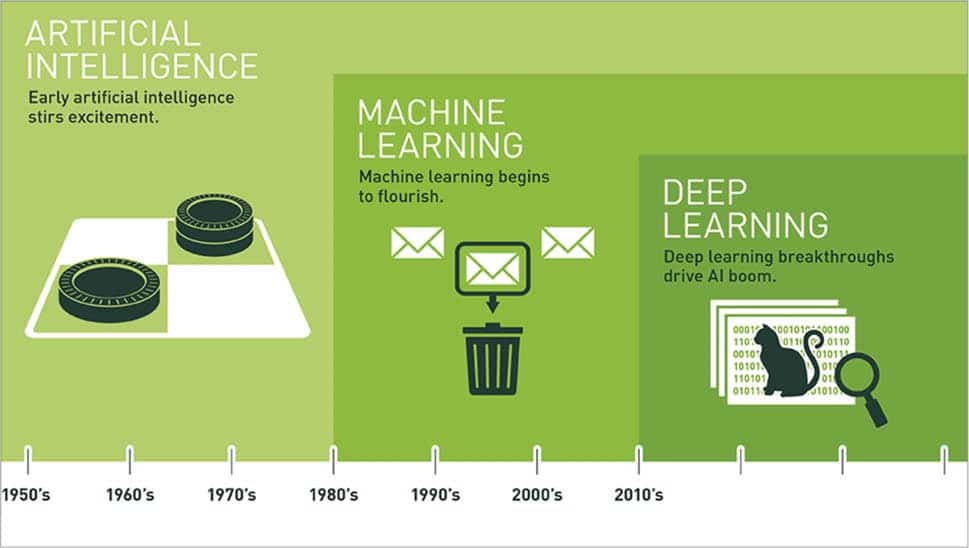
Visual recognition* has particularly benefited from advances in Deep Learning, making it possible to recognize, detect and segment objects in images with a very accurate performance. A deep learning model learns to recognize concepts that make sense for us humans, such as a landscape, handbags, a smiling face etc.
To do so, it finds the most significant elementary contours and shapes, and combines them to create more complicated patterns, which will also be combined to create even more complicated patterns, etc. At the end of this process, often referred to as a multi-layering, the model predicts one of the classes* it has been trained on.
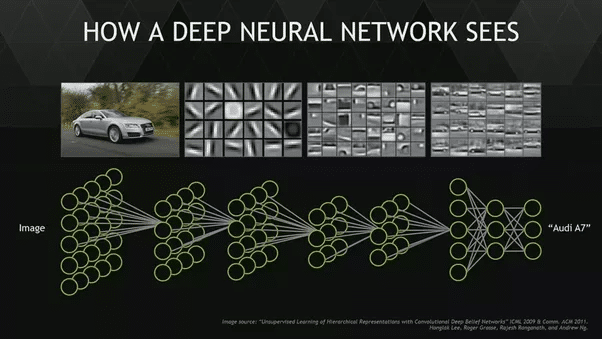
G*
Generalization
The ability of a machine learning* algorithm* to perform well on pictures it has never seen. If the model is trained on a set of 1000 images, will it be able to produce good results on every other image?
H*
Heuristic.
The scientific art of making discoveries. From the greek word eurisko (“I believe”), which led to “Eureka”, which was popularized by Archimede when he discovered the Archimedes’ principle in his bath. The Heuristic approach consists in progressively eliminating all alternatives to find a working and applicable solution.
Heuritech.
The combination of two words : heuristic and technology. Made up of brains, that together, form Heuritech, a start-up whose mission is to build the best visual recognition tailored to consumer industries. By uniquely applying this state-of-the-art technology to millions of Instagram pictures each day, we are able to provide predictive analytics on products and trends. Read more here.
L*
Labelled data
The goal of a machine learning* model* is to predict the right output given an input. For instance, some models that we use at Heuritech are able to predict specific handbag types (output) given an image (input). These models are trained on labelled data, i.e. a set of images along with their tag*.
Training a model is very costly, partly because it requires several thousand labelled data that humans usually need to label one by one. In Heuritech’s case, labelled data consists in a set of pictures that are associated to fashion attributes.
M*
Machine Learning (a branch of AI)
As a reminder, AI* is any program that achieves tasks usually tackled by humans. One of the ways to build this AI is to use Machine Learning models. These models have the ability to learn using labelled data*. For example, if you want the model to recognize dresses in pictures, you will show it a few hundreds of pictures and tell it they correspond to dresses. You will do so until it is able to recognize them in pictures it has never seen before (see Generalization*).
Model
A mathematical model is a way of understanding the world through equations. But the world is actually quite restricted since it’s only made of the type of data our model is able to read (be it images, sounds, texts, stock prices, …).
Given an input, a model is trained to provide a proper output. In the case below, the input is an image and the output is a localized attribute, e.g. the handbag.
In machine learning, all models are trained with data to behave in a specific way.
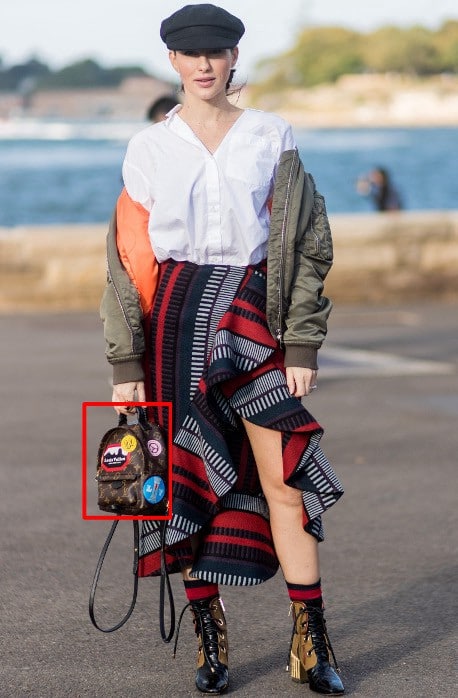
N*
Neural network
Picture a brain and you have a neural network: i.e. a network composed of millions of units that make layered calculations to achieve a decision. Just like we do when we think.
Natural Language Processing (NLP)
A branch of Artificial Intelligence* which focuses on text. The name is pretty self explanatory: the machine is processing the natural (=human) language. That’s how, for example, spam emails end up in the spam mailbox: because your email uses an NLP system trained to recognize and filter spam.
P*
Pattern
A structure in the data* that repeats itself. The model* automatically learns to extract, recognize and characterize patterns.
Precision & Recall
Precision and recall are metrics used to measure the performance of a model*.
Precision: For everything that your model predicts, what is the proportion of predictions that are correct?
Recall: For everything that your model should find, what proportion is effectively found?
Let’s take a concrete example.
Below is a basket with 6 apples and 3 peaches. We ask a model to find the apples. This model, not so performant, considers that there are 5 apples but in reality it’s 3 apples and 2 peaches.
- The precision of this model is 3/5 = 60%, i.e. 3 correct apples among 5 apple predictions.
- The recall of this model is 3/6 = 50%, i.e. among the 6 apples in the basket, 3 of them are found.
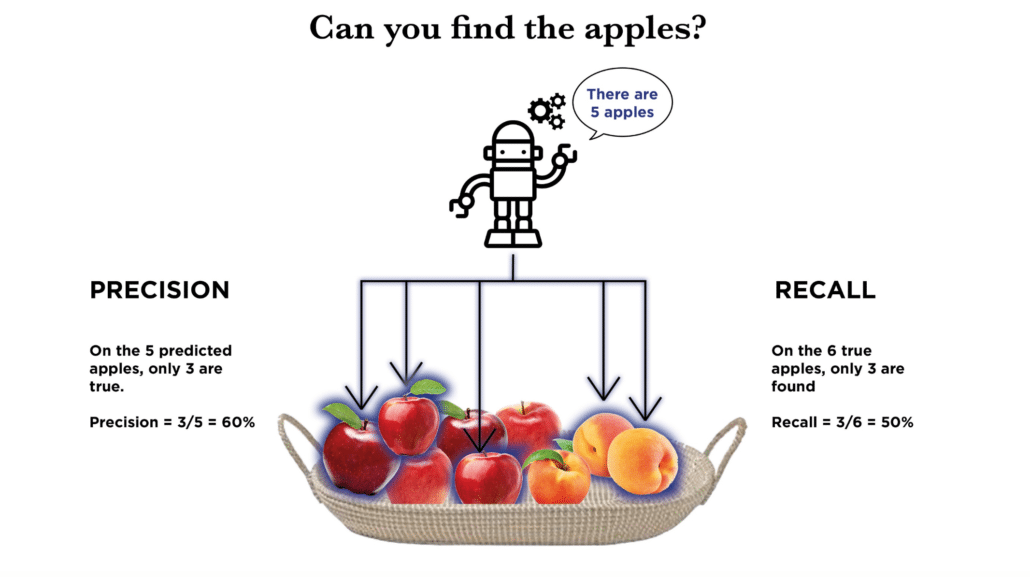
S*
Segmentation
Image segmentation automatically draws the contours of an object. Segmentation is useful for many functionalities such as color extraction or garment recognition.
In the gif below, you can see both bounding boxes (rectangles surrounding the object) and segmentation (the contour of the object itself), which are automatically generated by a machine learning* model*.
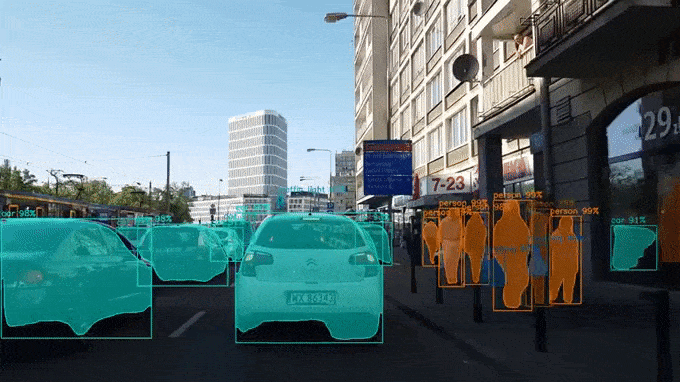
T*
Tagging
Tagging is to artificial intelligence* what hashtags are to Instagram. Each image could be associated to tags, for example, #tshirt, #red, #cropped, etc.
See also: classification
V*
Visual recognition (also called Computer Vision)
One of Artificial Intelligence’s* branches that focuses on images, hence the name visual + recognition. A model can be trained to recognize specific items in pictures: such as clothes in Heuritech’s case.
We hope you liked our Artificial Intelligence Dictionary!
Feel free to give us your feedback and propose new definitions at info@heuritech.com
This dictionary will be updated regularly. If you want to stay in touch with our latest news, subscribe to our monthly newsletter about artificial intelligence and fashion.
